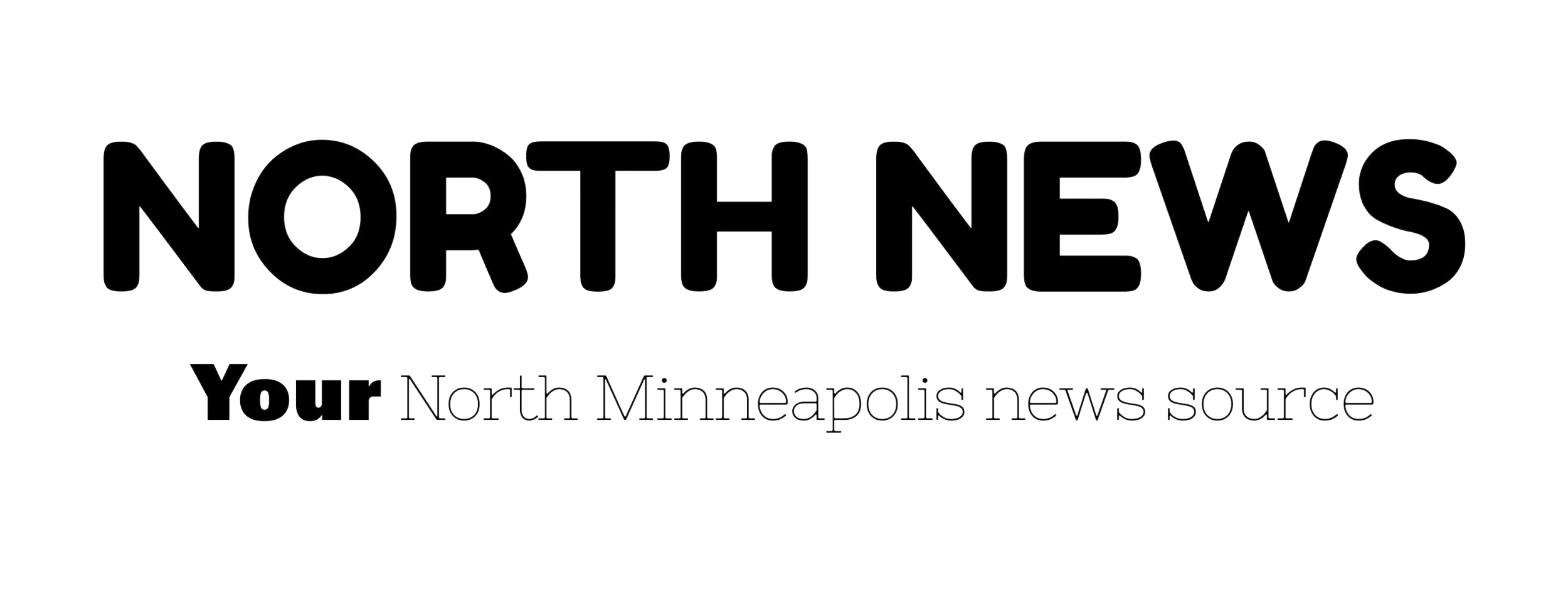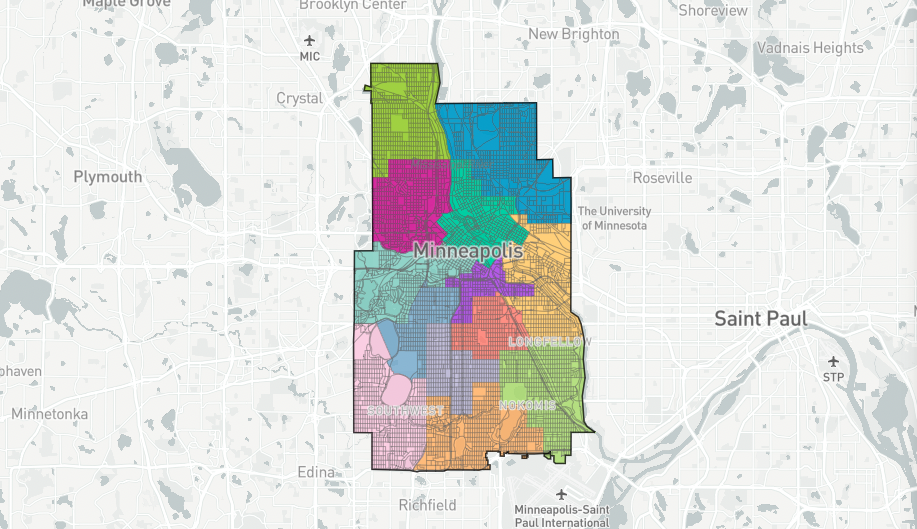City redistricting process nears end; public comment possible through February
The public is able to participate in Minneapolis’ redistricting process by adjusting current ward boundaries using Districtr software on the city’s website and submitting proposed maps for consideration.
As the processes for state and local redistricting come to a close, here’s a guide to what’s being proposed and how to get involved.
Pillsbury United Communities’ Civic Producer Jackie Renzetti and Community Storyteller ShaVunda Brown created this resource based on reporting from the Minneapolis Documenters program. Documenters Josh Martin, Joseph Logan, Allison Meyer, Azhae’la Hanson, Dany Barber and Fabiola Gutierrez contributed to this report.
What is redistricting and where are we in the process?
Every 10 years, boundaries for Congressional, state Legislative and city-wide political districts get redrawn based on population growth according to census data. Because some areas will gain or lose population at different rates, the districts are redrawn so that they are as equal as possible in population.
Left: The Redistricting Group's latest (Jan. 18) map of new, proposed city council ward boundaries. Visit the city website for the most up-to-date drafts by the Redistricting Group. Right: The city council ward boundaries as they exist now.
Legislative and Congressional maps are expected to be released by a panel of five judges on Feb. 15. This panel was appointed by the Minnesota Supreme Court Chief Justice to draw the maps based on submissions from four interest groups (including the Republican and Democratic-Farmer-Labor parties).
At the city level, Redistricting Group members – comprised of the city’s Charter Commission and nine advisory members who are volunteer residents – are debating new boundaries for city council wards and park districts. The Charter Commission consists of 15 Minneapolis residents who applied and then were appointed to four-year, volunteer terms by the Chief Judge of the Hennepin County District Court.
In public meetings, the Redistricting Group has committed to adjusting the maps as little as possible to keep neighborhoods intact. As of the Jan. 18 meeting, no major changes are currently planned for the North, East Phillips, Powderhorn and Cedar Riverside neighborhoods. However, the group is still debating placements for Marcy Holmes, East Harriet, East and West Bde Maka Ska, Longfellow, Cooper and the North Loop. [Editor’s note: this story was written prior to another mapping discussion on Jan. 26. Visit the city website for the most up-to-date map.]
There are two more public hearings scheduled for Feb. 9 and Feb. 24. Afterwards, the Redistricting Group is scheduled to finalize the maps March 2, though this date could be adjusted if the group decides to further change the maps based on public input and the state-level maps.
Why does redistricting matter? How does it affect average people’s lives?
While the goal of redistricting is to ensure equal representation, the process can divide neighborhoods and communities between districts, meaning that their collective voting power can be reduced. It can also keep them together, enhancing their collective power. Neighborhoods that are predominantly Black, Indigenous or other communities of color could have their voting power diluted if their wards or boundaries are larger than those containing more predominantly white neighborhoods.
This year, there has been a historic increase in community involvement to ensure everyone has an opportunity to weigh in on how their community is represented, thanks to organizations including the Asian American Organizing Project, League of Women Voters, Common Cause Minnesota, Minnesota Council of Foundations, and North News’ own Pillsbury United Communities.
Put simply, redistricting affects what you have access to. Elected officials make decisions that affect schools, parks, businesses and healthcare resources.
How can community members influence the process?
Familiarize yourself with the maps that have been drafted. Notice the changes proposed to your ward and district. Ask questions and attend meetings and testify during public hearings. Public comment can also be submitted online.
Minneapolis redistricting timeline
2021
August: Nine Minneapolis residents are approved by the Charter Commission to be volunteer advisory members on the city’s Redistricting Group.
September-October:
The nine advisory members meet with the Charter Commission as one Redistricting Group.
In its first few meetings, the group reviewed legislation regarding public data and the redistricting process.
By the end of October, the group has its first draft of park districts.
November - December:
The Redistricting Group begins discussing potential maps for city wards. There was a consensus to keep neighborhoods together as much as possible. At first, the group decided not to consider elected officials’ addresses in the process because they were concerned about gerrymandering. They reversed course after the public raised concerns that some council members could be moved out of their wards.
First two public hearings: Speakers emphasized requests to keep neighborhoods together.
2022
January: The Redistricting Group finalizes their drafts ahead of public hearings. They may have additional meetings based on public input and the state-level maps, which are scheduled to be made public Feb. 15.
February: Residents have two more opportunities to weigh in at public hearings: Feb. 9 at 7 p.m. and Feb. 24 at 4 p.m.
March: The Charter Commission is scheduled to approve final maps at its March 2 meeting.



